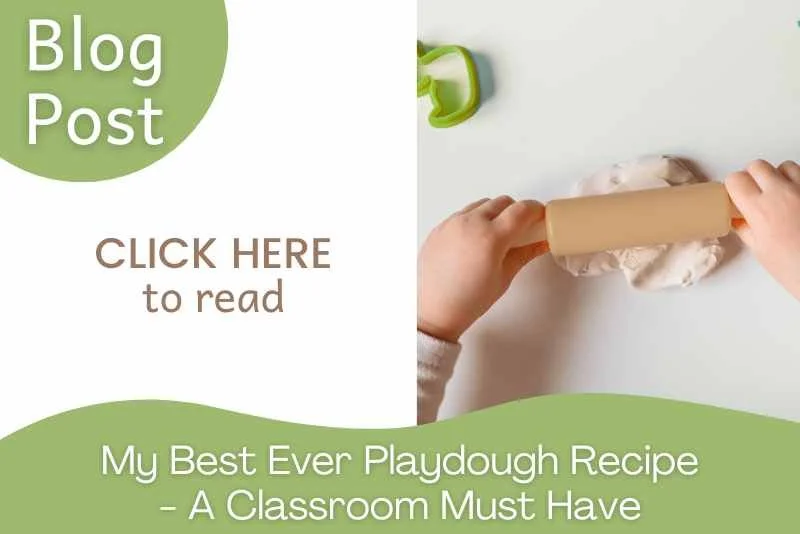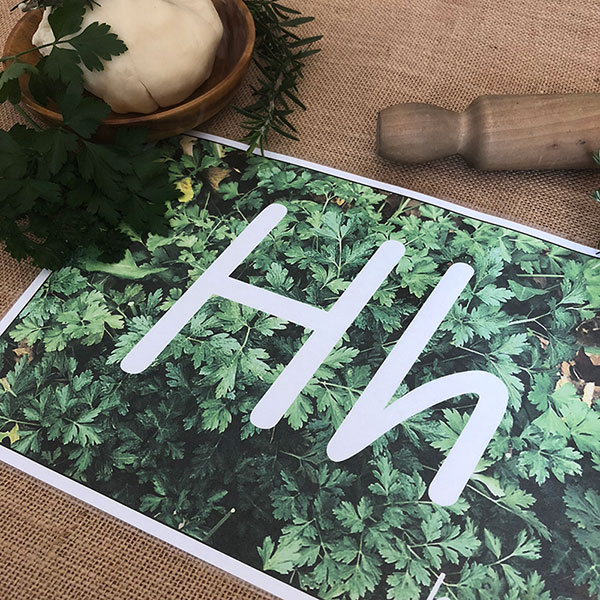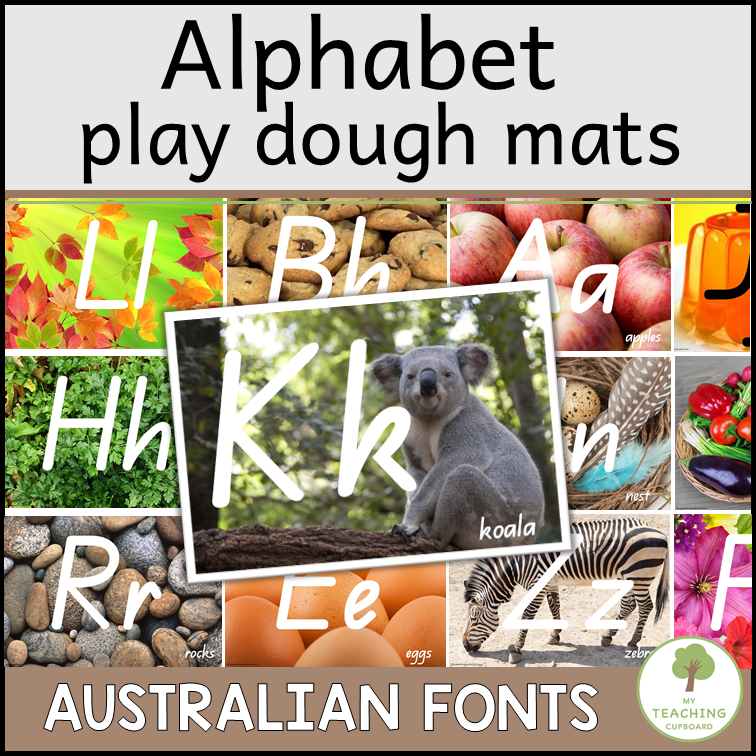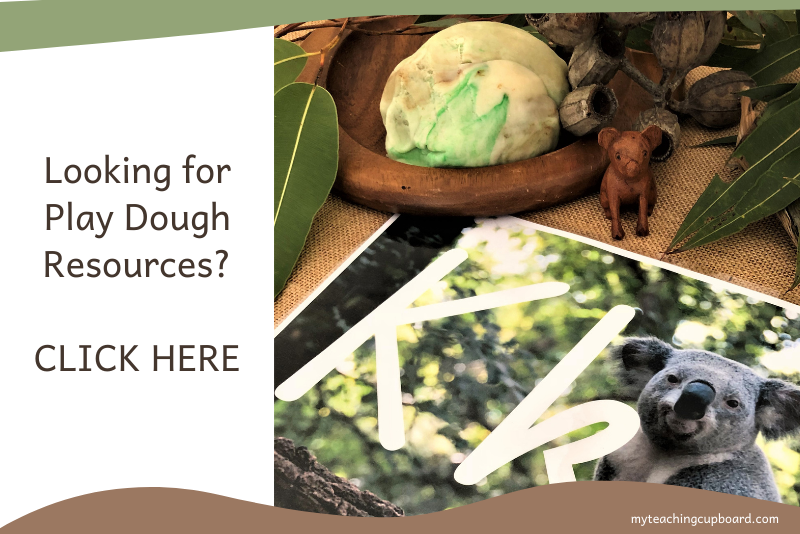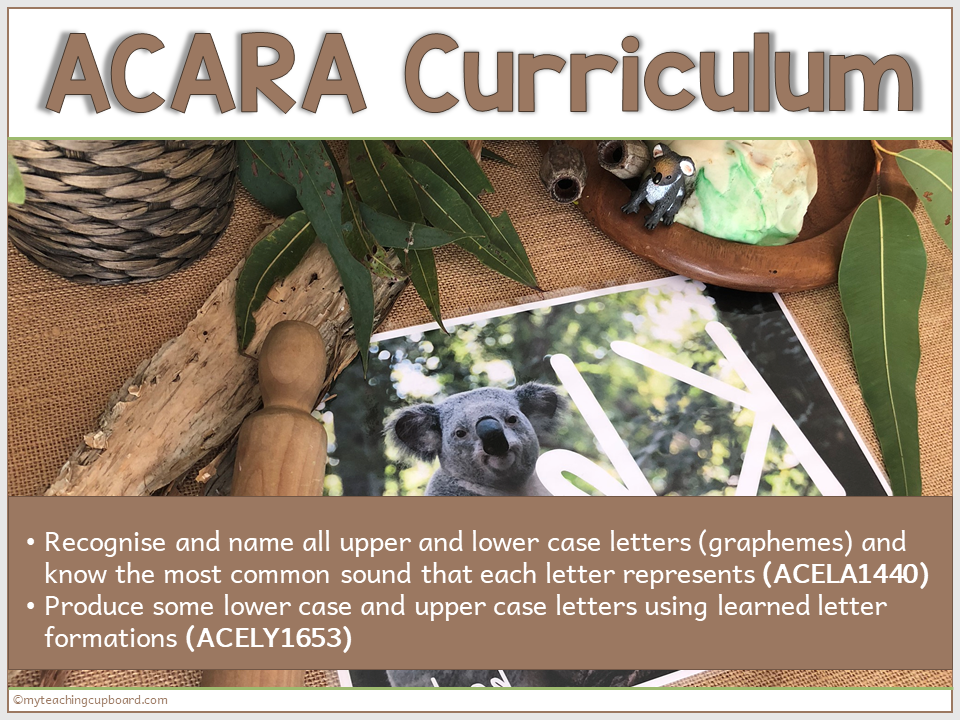How to Teach Phonics with Play Dough
Learn how to teach phonics with play dough in a play-based classroom through sensory play experiences. Enhance literacy and learning with props and phonics playdough mats for engaging and effective teaching.
Playdough is always a favourite in my classroom. It's ideal to use that interest to reinforce educational skills and concepts. That’s the beauty of a play-based classroom. You can teach phonics and consolidate phonemic skills through the provocations and learning invitations you provide.
So if you’ve ever found yourself wondering, "How do I teach phonics in a way that’s engaging, fun, and still curriculum-aligned?"- don’t worry - you’re not alone. Many early childhood teachers feel stuck relying on flashcards or worksheets to teach phonics.
The good news?
There’s an effective playful way.
In this blog post, I’ll show you how to use playdough phonics activities to make literacy learning more engaging and effective. You’ll also discover how sensory play, provocations, and phonics mats can support brain development and keep your children excited about learning.
Why Playdough is a Powerful Tool for Teaching Phonics
Playdough is a wonderful sensory experience.
When you stimulate any of the 5 senses (seeing, touching, smelling, tasting or hearing), you are helping the brain to develop. When you ignite the senses of children, neural pathways are created in the brain.
Current brain research suggests that sensory learning experiences will help children to LEARN more and RETAIN more too.
This is why multisensory teaching strategies, like combining tactile play with visual and auditory input, are so effective in early childhood education.
Playdough provides a great opportunity to build phonics skills in a way that feels like play, not work. Whether it’s a structured part of your lesson plans or a morning work time routine, it offers young learners the chance to practice their letter sounds in an open-ended, hands-on way.
For sensory ideas and the recipe I use in my own classroom, check out this post:
I tend to make one batch of play dough each term. You will love my favourite play dough recipe (a printable download is included in the blog post). It lasts for ages and doesn’t need refrigeration.
What Are Playdough Phonics Activities?
Playdough phonics activities are hands-on learning experiences that use playdough to support:
Phoneme awareness
Letter-sound correspondence
Letter formation
Vocabulary development
Fine motor skills
They can range from forming letters on playdough mats, to matching props and sounds, to creating sound-themed play scenes. These activities build essential early literacy skills in a meaningful, multisensory way.
They're also a fun way to support lowercase letter formation outlines and introduce concepts like CVC words, long vowels, and initial sounds through play.
How to Teach Phonics with Playdough?
Play dough by itself stimulates the sense of touch. Adding an essential oil to play dough will ignite the sense of smell. Now 2 senses are being stimulated and those neural pathways in the brain are being created.
If you want to teach or reinforce a phonics concept, add a phonics stimulus to the mix. The first phonics stimulus I always add is an alphabet play dough mat. This is how I teach alphabet letter symbols with playdough.
To teach phonic concepts they will remember, allow the children to feel the letters as they squeeze, roll and bend the playdough. They will be creating and accessing brain pathways through their sense of touch, smell and sight when they form letters with the playdough.
Adding props to the playdough also develops more creative and critical thinking. The children will experiment and problem solve with the playdough and the props.
Adding some well-planned and thoughtful props transforms a play dough experience into a learning provocation. You will also have the bonus of extending your student’s oral language as they discuss the new props.
This provides an optimal experience for developing literacy in a kindergarten classroom, whether in small groups or independent stations.
The senses, being explorers of the world, open the way to knowledge. Our apparatus for educating the senses offers the child a key to guide his explorations of the world, they cast a light upon it which makes visible to him more things in greater detail than he could see in the dark, or uneducated state.
(Maria Montessori: The Absorbent Mind)
Setting Up a Phonics Playdough Table - with Examples!
I like to add props to my playdough table. This further enhances the sensory learning experience and reinforces our focus letter sound.
This is how I teach phonemes with playdough.
As I already mentioned, the first prop I add to the play dough is one of my phonics play dough mats. I carefully designed each mat with a theme in mind.
For instance, when I use the /Hh/ mat with the beautiful image of herbs as the background, I also add either a vase of cut herbs or a small herb plant to the play dough provocation. The children’s fine motor skills can be further developed by adding scissors to cut some of the herbs. These cut herbs can be added to their playdough. Their sense of smell is awakened as they smell the cut and crushed herbs.
This learning provocation encourages:
Open-ended creative play
Critical thinking and problem solving
Extensive vocabulary development
Added sensory stimulation
Further development of fine motor skills
Other prop ideas:
/Ss/ sound: Add a tray of sand, shells, and plastic snakes.
/Mm/ sound: Use mini mirrors, marbles, and small monster figurines.
/Ff/ sound: Add feathers, fabric scraps, and small fish counters.
👉 Looking for ready-to-go mats?
Check out my Alphabet Playdough Mats in ALL Australian Fonts — a must-have resource for teachers seeking easy ways to add learning fun to their phonics centres.
Why Repetition Matters in Phonics Learning
We all know how important revision and practice is in learning. You can’t teach a child once and expect them to have learnt the new letter and its corresponding sound. A new phonics concept needs to have exposure numerous times and in a variety of diverse ways.
The greater the number of opportunities, the stronger the brain and memory can connect, learn and remember.
The more varied the opportunities, the stronger the brain and memory can connect, learn and remember.
Playdough gives students a great way to get extra practice with letter sounds and phonics skills in a relaxed, open-ended way.
💡 If you use dry-erase markers with laminated mats, children can also trace the letters after building them - making this a fun activity and versatile literacy centre.
Want to understand the difference between phonological and phonemic awareness and get a heap more hands-on activities?
Check out thuis blog post: Teaching Phonological Awareness and Phonemic Awareness
How I Teach Phonics with Playdough in My Prep Classroom
At my school, we teach phonics using The Jolly Phonics Program. At the beginning of the Prep year we focus on 3 sounds over 2 weeks. I explicitly teach each letter, sound and action. Then the children practice and revise these concepts during our investigation time. The play dough table is just one place in my room where they can do this.
Using my play dough phonics mats and related phonemic props to teach phonics means I need to change the play dough table around quite regularly.
Choose props to match your phonics focus
It’s very easy to create a new learning experience with little effort. To introduce a brand-new provocation, all I need to do is swap the mat and a few props. The new props bring new learning opportunities.
Oh, and the minute you add something new to an area, I can guarantee the kids will be lining up to get there.
By providing students with materials that they can physically manipulate, play with and explore, teachers help them learn more about the world and develop crucial skills that they will utilize later in life.
(Caitrin Blake, Concordia University Nebraska)
Skills and Benefits of Playdough Phonics Activities
Playdough phonics activities support:
Phonemic awareness
Letter recognition and formation
Sound-symbol knowledge
Fine motor development
Sensory integration
Vocabulary and oral language
Engagement and enjoyment
Confidence and independence
Playdough phonics activities are a great resource for supporting young children in foundational literacy. It’s also an effective way to include phonological awareness centre activities in your classroom.
Use a small ball of playdough to roll out each letter. This provides essential ingredients for hand strength and coordination. Add essential oils to enhance the sensory play experience and make it even more memorable!
These are simple ways you can embed meaningful phonics instruction into your day - without heaps of extra prep.
Make Phonics Playful and Purposeful
If you want to boost engagement, build fine motor skills, and support early literacy outcomes in your classroom - playdough phonics activities are the way to go.
By adding phonics mats and related props, you can transform a simple playdough experience into a powerful, multisensory learning invitation.
✅ Ready to make phonics fun and hands-on?
Grab my done-for-you Alphabet Playdough Mats in ALL Australian Fonts and get started today!
Use these beautiful mats in your classroom to help you teach phonics at your play dough table. The pack contains 40 mats in A4 size. They each have an authentic photograph background reflecting the associated phoneme.
Every 26 letters of the alphabet are represented at least once. There are two mats for each vowel, with both the long and short vowel sounds included.
For repeated use, be sure to laminate the mats or slide them into a sheet protector before using them.
These digital downloads are the perfect way to bring structure, creativity, and joy to your literacy centres. Your students will have so much fun… AND you’ll feel confident knowing they’re learning every step of the way!
Everything we know about the world and ourselves has come through our senses (Bogdashina, Sensory Perceptual Issues in Autism and Asperger Syndrome)


